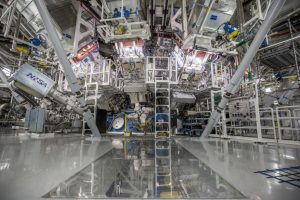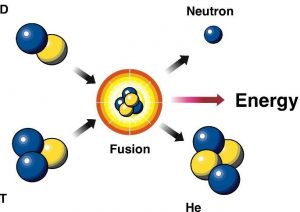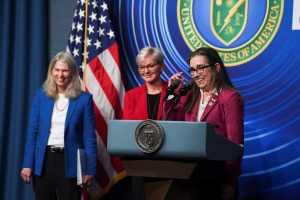On December 5th 2022, scientists at the Lawrence Livermore National Laboratory (LLNL) in the United States successfully created the reaction that powers the sun – nuclear fusion ignition – for the first time in human history.
Announced by the US Department of Energy on December 13th, this “historic, first-of-its-kind” achievement has excited the scientific community because of its potential as a clean energy source.

Inside the LLNL’s National Ignition Facility, where the experiment took place. Credit: LLNL
To achieve fusion ignition, the scientists had constructed “the world’s most energetic laser”, consisting of 192 laser beams, and aimed it at a small canister containing the compounds deuterium and tritium. They were able to generate 3.15 megajoules of energy from an input of 2.05 megajoules, a markup of 54%.
This result – more than 60 years after researchers first began to study fusion – proved that controlled nuclear fusion that produces more energy than it consumes is possible.

Depiction of fusion: deuterium(D) and tritium(T) fuse to form the larger Helium(He) and release energy. Credit: US Department of Energy
Nuclear fusion – the process that allows the Sun to emit vast amounts of energy in the form of light and heat – involves the joining of two atoms of a lighter element to form a heavier one, and in the process releases a lot of energy. Compared to nuclear fission, which is how nuclear power plants generate energy, fusion is much more powerful and also much cleaner as it does not produce radioactive materials as a byproduct.
For these reasons many believe that nuclear fusion is a promising avenue for sustainable and eco-friendly energy in the future.
However, there is still a long way to go until fusion could be viable for commercial use. When asked to comment on the time needed, Kim Budil, the director of the LLNL, stated that “It’s probably two or three decades. Scaling from where we are today to what you would require for a power-generating plant is a pretty significant challenge.”

Director Kim Budil announcing the achievement of fusion ignition in December 2022. Credit: Mary Calvert/REUTERS
Moving forward, the over 8,000 engineers, physicists, and chemists at the LLNL and researchers worldwide will have to find ways to conduct fusion ignition more quickly and cheaply, while also generating much more power. According to Budil, “What we need now is a scientific and investment strategy that allows us to make progress on all of these fronts simultaneously… [because] we need gain of a few hundred to make an energy system.”
Despite the many challenges ahead, Tim Luce, one of the leaders of the international fusion research project ITER, remains hopeful. “A result like this will bring increased interest in the progress of all types of fusion, so it should have a positive impact on fusion research in general,” he states.
~ Rebecca Yang
